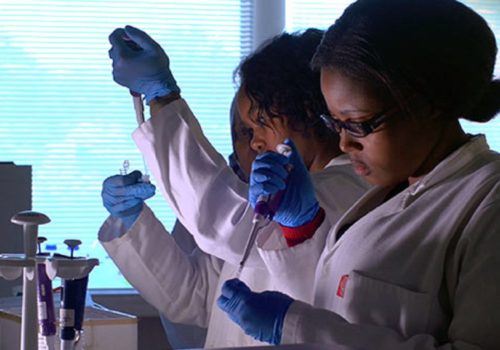In 2018, I established an executive initiative called The Law Department as a Business Enabler. Throughout the year, the initiative spotlighted shared experiences and success stories related to how several in-house legal executives based in the US Midwest Region work to advance their corporate law department’s mission. I rounded out a very successful year for the initiative with an executive roundtable that I hosted on December 6 in Chicago. The roundtable was co-sponsored by Morae Global.
I facilitated a discussion with executives from a number of leading organizations including:
United Airlines
Microsoft
JBT Corporation
Guaranteed Rate
Jones Lang LaSalle
Illinois Medical District
ClariLegal
TJM Institutional Services
Motorola Solutions
American Medical Association
Archer Daniels Midland Company
The Kraft Heinz Company
Key Takeaways from the Discussion:
What are the Practical Legal and Business Considerations in Exploring the Corporate Law Department’s Mission to Protect and Enable the Business: Start with the Mission, Right People, Right Process, Right Systems… and a Business Partner Approved Scorecard?
- Law Department Mission:
- Many organizations have a mission statement, yet, their law departments do not. Whether a law department has a mission statement or not, the group agreed that some business partners still come up with their own impressions of the law department with the following negative characterizations discussed: The No Function; The Sales Prevention Team; Just a Cost Center; Expensive Risk Management; The Revenue Hold Up Department.
- The group agreed that law departments should focus on mission statements that demonstrate the commitment to a more strategic relationship with the business with these characterizations discussed most often: Trusted Advisor, Relationship-Driven, Problem Solver, and Business Partner. One insightful input: “Everything is a business decision till it can no longer be”.
- Right People:
- The group discussed the challenge of “cultural fit” when recruiting and retaining legal professionals, both for in-house responsibilities and outside counsel relationships. The group consensus was that it is more effective to assess “cultural enhancement” as opposed to just “cultural fit”. For example, does a new in-house hire’s skills enhance the law department’s ability to bring more work in-house? Another example, does outside counsel meet diverse staffing requirements?
- Beyond having the requisite technical skills (“hard skill”) to do the job, the most popular “soft skill” characteristics that the group focused on were: Empathetic, Flexible, Curious, Resilient, and Having a Value Mindset.
- Right Process:
- The group discussed insights on how law departments can better align with enterprise objectives during the annual strategic planning process. This process would likely vary across industries and organizations, but one insight was to build a law department’s goals for the year using the same language as the business partner’s goals. For example, if the business partner has a focus on “New Customers”, the law department can organize its contract management process to be more responsive to new customer agreements.
- Right Systems:
- Most of the group had a contract management system in place
- Less than half of the group had a matter management system in place
- The group discussed systems that could help law departments provide self-service solutions to their business partners. The most popular workflow items for self-service solutions were: Non-Disclosure Agreements (NDAs), Certain Sales and Procurement Agreements (such as Pricing Agreements), and other workflow items where the approval process can be documented and then automated.
- Measuring and Communicating the Law Department’s Value to the Business:
- Is cost certainty better than cost containment? Yes, according to the group.
- One insight was to revamp the outside counsel program based on the following specifications and requirements: Alternative Fee Arrangements (AFA), Diversity, and Legal Technology
- Speaking of AFA, the group came up with a new definition of AFA, replace “Alternative” with “Appropriate”
- Is it valuable to organize 1-on-1 conversations with specific business partners to get performance feedback? Yes. The group agreed that the best conversations were the ones structured to be somewhat informal but still open and transparent e.g. Let’s have lunch or grab coffee.
- Do end of year surveys help? Yes. The group agreed that the survey questions can be a mix of qualitative and quantitative questions.
- What are some of the characteristics of good metrics?
- They are time bound.
- They take into consideration leading and lagging performance indicators. For example, if the enterprise has an Employee Engagement metric, the law department should be able to report on how it is impacting that metric with a reference to the “Number of employees trained on our sexual harassment policy in 2018”.
- Furthermore, good metrics help law departments in the journey of “being innovative”. The group discussed how innovation applies to both the Legal function’s approach (e.g. being enabled by technology) but also being creative in problem solving.
- Is it helpful to document certain legal wins throughout the year, perhaps on an intranet or internal newsletter? Yes.
- Is it helpful to share lessons learned? Yes, but the law department should limit this to specific stakeholders.
- Is it worthwhile to create annual performance plans with outside counsel? The group agreed that this is worthwhile. Whether outside or in-house, these resources are all involved in the provision of legal services to the corporation and should be measured in the same spirit, and with similar business principles in mind.
- Is cost certainty better than cost containment? Yes, according to the group.






